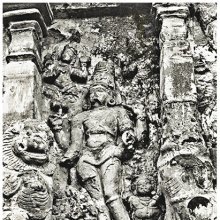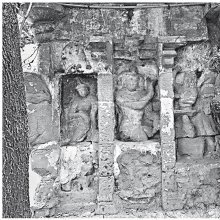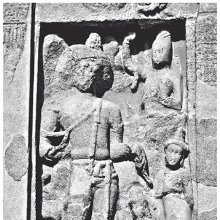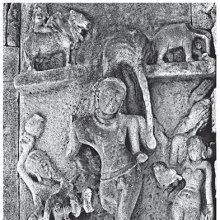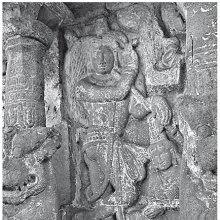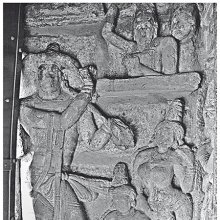Beggar: 1 definition
Introduction:
Beggar means something in the history of ancient India. If you want to know the exact meaning, history, etymology or English translation of this term then check out the descriptions on this page. Add your comment or reference to a book if you want to contribute to this summary article.
Images (photo gallery)
(+13 more images available)
India history and geography
Source: Singhi Jain Series: Ratnaprabha-suri’s Kuvalayamala-katha (history)Beggars were commonly depicted on the Saṃsāracakra paintings (representing scenes of human life), in ancient India, as mentioned in the Kathās (narrative poems) such as Uddyotanasūri in his 8th-century Kuvalayamālā (a Prakrit Campū, similar to Kāvya poetry).—Page 185.21 f.: Here follows a description of a printed scroll illustrating the Jaina conception of saṃsāracakra. [...] The saṃsāra-cakra illustrated the three worlds of hell, human world and the world of gods. [For example:] An old man surrounded by his family; a beggar asking for food; a mendicant clothed in tattered garments.
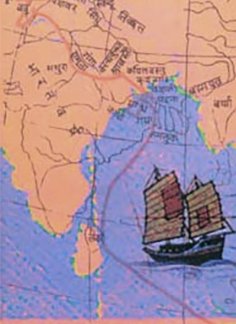
The history of India traces the identification of countries, villages, towns and other regions of India, as well as mythology, zoology, royal dynasties, rulers, tribes, local festivities and traditions and regional languages. Ancient India enjoyed religious freedom and encourages the path of Dharma, a concept common to Buddhism, Hinduism, and Jainism.
See also (Relevant definitions)
Starts with: Beggar ticks, Beggar weed, Beggar-lice, Beggarslice.
Full-text (+361): Yacaka, Bhikshuka, Arthin, Ranka, Yacanaka, Bhikshu, Bhadangabhikara, Bhikari, Kaulatineya, Margana, Sannyasika, Bhiksharthin, Vaniyaka, Dhvanksha, Bhikshekari, Magata, Bhikshashin, Bhiksharthi, Mukhampaca, Bhikshaka.
Relevant text
Search found 148 books and stories containing Beggar; (plurals include: Beggars). You can also click to the full overview containing English textual excerpts. Below are direct links for the most relevant articles:
The Three Beggars < [April - June 1977]
A Cry of Hunger in The Hungry Ones < [October – December, 2007]
The Longer Poems of O. P. < [January – March, 1984]
Chaitanya Bhagavata (by Bhumipati Dāsa)
Verse 2.16.113 < [Chapter 16 - The Lord’s Acceptance of Śuklāmbara’s Rice]
Verse 1.15.218 < [Chapter 15 - Marriage with Śrī Viṣṇupriyā]
Verse 2.26.133 < [Chapter 26 - Descriptions of the Mercy Bestowed on Śuklāmbara and Vijay and the Lord’s Desire to Accept Sannyāsa]
Dhammapada (Illustrated) (by Ven. Weagoda Sarada Maha Thero)
Verse 62 - The Story of Ānanda, the Rich Man < [Chapter 5 - Bāla Vagga (Fools)]
Verse 244-245 - The Story of Culla Sārī < [Chapter 18 - Mala Vagga (Impurities)]
Verse 21-23 - The Story of Sāmāvati < [Chapter 2 - Appamāda Vagga (Heedfulness)]
Amaravati Art in the Context of Andhra Archaeology (by Sreyashi Ray chowdhuri)
Sasa Jātaka < [Chapter 3 - Amarāvatī and the Formative Stage of the Buddhist Art]
Losaka Jātaka < [Chapter 3 - Amarāvatī and the Formative Stage of the Buddhist Art]
Amarāvatī impact on later schools of Indian art < [Chapter 5 - Impact of Amarāvatī Art]
A Blessed Pilgrimage (by Dr. Yutang Lin)
The Mahavastu (great story) (by J. J. Jones)
Chapter VI - The Vijitāvin Jātaka < [Volume III]
Chapter IX - The Story of Dharmapāla < [Volume II]
Chapter I - Prologue < [Volume I]
